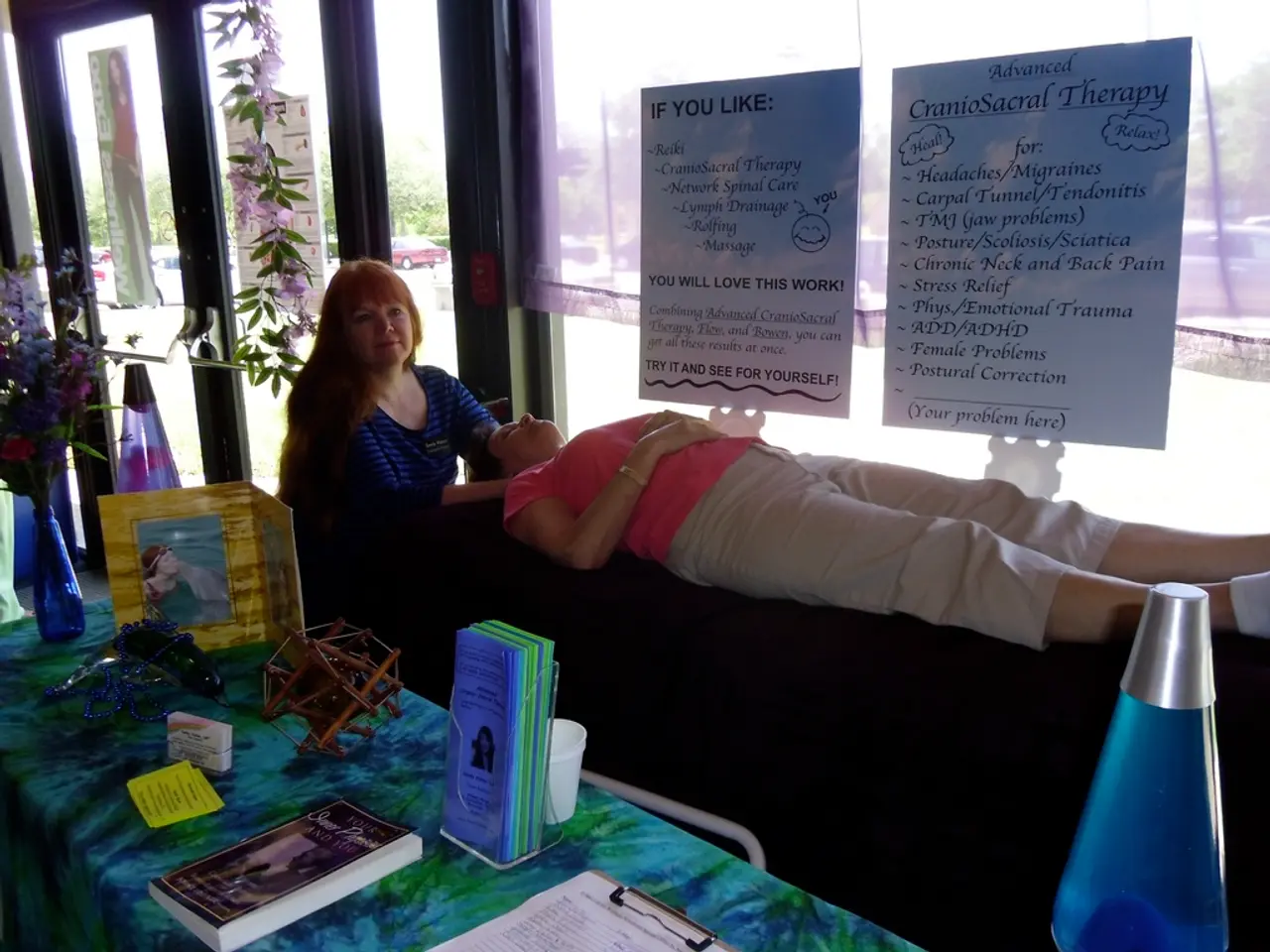Hypnotizing Yourself: Methods, Advantages, and Further Details
Self-hypnosis is a powerful relaxation technique that has been gaining popularity due to its evidence-based benefits for various health conditions and symptoms. This practice, which induces a heightened awareness of inner experiences, can help reduce stress, anxiety, and pain, improve sleep, and support habit change.
Key benefits supported by research include:
- Stress and Anxiety Reduction: By activating the body’s natural relaxation response, self-hypnosis helps lower tension, steady the heart rate, and foster a greater sense of calm. With regular practice, many report decreased feelings of stress and anxiety [1][4][5].
- Pain Management: Studies show that hypnosis-based pain protocols can reduce chronic pain intensity by about 45%, making self-hypnosis a valuable tool for pain control in various conditions [2][4][5].
- Improved Sleep: Self-hypnosis techniques are linked to better sleep quality due to enhanced relaxation and reduced stress [1][2].
- Habit Control and Behavior Change: Clinical hypnosis has evidence supporting its effectiveness in smoking cessation, weight control, and potentially reducing alcohol use. Hypnosis facilitates a focused state helping individuals adopt new behaviors and overcome addictions or habits [3][5].
- Supporting Health Conditions: Hypnosis has been shown to improve outcomes in conditions such as obesity, allergies, asthma, atopic dermatitis, and even enhance breast cancer survival when combined with other treatments [3][5].
- Mental Health and Trauma Healing: Beyond stress and anxiety, self-hypnosis assists in healing trauma and dissociation by fostering cognitive flexibility and focused attention, enhancing therapeutic outcomes [2].
The process of self-hypnosis typically involves setting a goal, creating a comfortable environment, and finding a state of focus and relaxation. To exit the hypnotic state, an individual breathes deeply while imagining more energy entering the body with each breath and may use a countdown from 5 or 10.
Self-hypnosis bears some similarities to meditation but is more focused on imagining scenes. People can complement their self-hypnosis practice with meditation or yoga techniques. The next step is to visualize a happy, peaceful scene and imagine a sensation of heaviness spreading over their entire body.
While not a standalone therapy, self-hypnosis is a powerful adjunct to conventional treatments for various physical and psychological conditions according to clinical research and expert consensus [2][4][5]. If a person finds it difficult to learn self-hypnosis, they may seek professional help from trained hypnotherapists.
Guided self-hypnosis sessions can be found on YouTube and in audiobooks. Regular practice of self-hypnosis can help improve the skill. During self-hypnosis, an individual can focus on a single point at eye level and breathe slowly and deeply. After visualizing a goal-directed imagery, the individual will recall their goal and imagine a scene that exemplifies it.
In conclusion, self-hypnosis acts by inducing a state of increased focus and deep relaxation, which helps people access their strengths and resources, empowering them to change symptoms, perceptions, and habits effectively [2][5].
- Self-hypnosis, a relaxation technique, supports personal growth and learning by reducing stress and anxiety, managing pain, improving sleep, and controlling habits.
- As part of the education-and-self-development field, self-hypnosis plays a significant role in mental-health care, offering evidence-based benefits for mental health and trauma healing.
- In the health-and-wellness sector, self-hypnosis, when combined with other treatments, has been shown to improve outcomes for various physical conditions, such as obesity and allergies.
- Therapies-and-treatments that embrace hypnosis, including guided self-hypnosis sessions on YouTube and in audiobooks, can serve as a powerful adjunct to conventional treatments, promoting health, wellness, and overall personal-growth.




